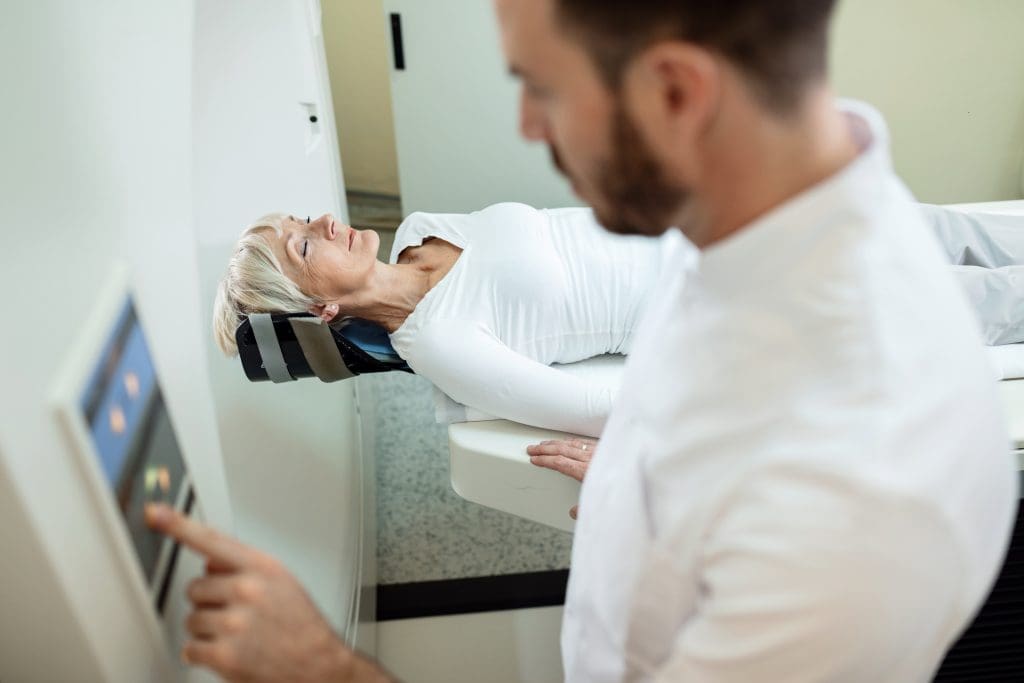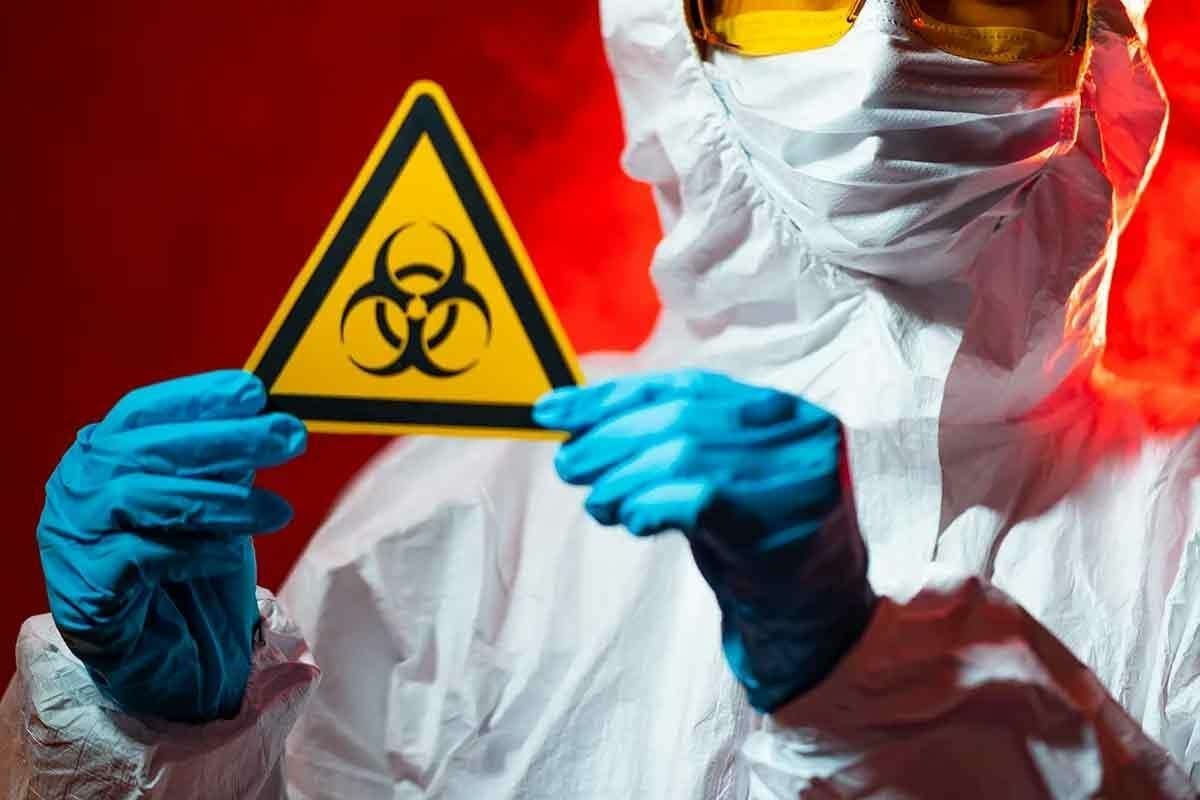Last Updated on November 26, 2025 by Bilal Hasdemir
Nearly 1.9 million people are diagnosed with cancer in the United States each year. Many undergo tests to find out how far the disease has spread. The PET scan is a key tool in cancer imaging.
A PET scan helps see if cancer has spread. But what does it really mean for a patient? This article will look into the role of PET scans in cancer detection. We’ll also discuss what a positive result might mean about cancer spread.
Key Takeaways
- PET scans play a significant role in cancer diagnosis and staging.
- A PET scan can help determine if cancer has spread to other parts of the body.
- Understanding PET scan results is key for patients and healthcare providers.
- Cancer imaging techniques like PET scans help in making treatment plans.
- The accuracy of PET scans can vary based on several factors.

What Is a PET Scan and How Does It Work?
PET scans give us a peek into the body’s inner workings. They help find cancer cells. This technology uses Positron Emission Tomography (PET) to see how the body’s cells work.
PET scans use a special radioactive tracer that’s injected into the body. This tracer goes to areas where cells are very active, like in cancer.
Basic Principles of PET Imaging
PET imaging finds cancer by looking at how cells use energy. It uses a glucose molecule with a radioactive atom, called Fluorodeoxyglucose (FDG). Cancer cells use more glucose, so they take up more of the tracer.
The Role of Radioactive Tracers
The radioactive tracer sends out positrons. These positrons meet electrons in the body, making gamma rays. The PET scanner catches these rays, making detailed images of the body’s inside.
PET Scan Equipment and Technology
Today’s PET scan technology often teams up with CT or MRI. This combo gives doctors both metabolic and anatomical info. It helps them diagnose and stage cancer more accurately.
A leading expert says,
“PET/CT has become an indispensable tool in oncology, giving us deep insights into tumor biology and disease extent.”
Understanding the mechanics of PET scans is essential for grasping their significance in cancer treatment. They use the metabolic differences between cancer and healthy cells. This helps doctors make better treatment plans.
The Purpose of PET Scans in Cancer Care
PET scans are key in cancer care, helping with diagnosis, treatment, and managing patients. They show how cancer cells work by looking at their metabolic activity.
Initial Cancer Diagnosis
PET scans are effective in detecting cancer at an early stage and assessing its spread. They are great for spotting cancers that other scans can’t see.
Staging and Treatment Planning
After finding cancer, PET scans help figure out how far it has spread. This info helps doctors plan the best treatment. PET scans are accurate and can spot cancer spread that other scans miss.
Monitoring Treatment Response
PET scans check if treatment is working. They look at how cancer cells are changing. This helps doctors know if they need to change the treatment plan.
Detecting Cancer Recurrence
PET scans also find cancer coming back early. This lets doctors act fast. The benefits include:
- Early detection of recurrence
- Improved patient outcomes through timely intervention
- Enhanced monitoring of treatment efficacy
PET scans are vital in cancer care. They give important info at every stage, helping patients get better care.
How PET Scans Detect Cancer Spread
Detecting cancer spread with PET scans is more than just seeing tumors. It’s about understanding how cancer cells change their metabolism. PET scans show how active cancer cells are, not just where they are.
Identifying Metastatic Disease
PET scans find cancer spread by showing where cells are very active. They use special tracers that cancer cells take up more of. This makes cancer cells show up clearly on the scans.
- Key indicators of metastatic disease on PET scans:
- High uptake of radioactive tracer
- Presence of “hot spots” in areas away from the primary tumor
- Increased metabolic activity in lymph nodes or other organs
Metabolic Activity as an Indicator
PET scans work because cancer cells use more energy than normal cells. They find areas where cells are using a lot of energy. This helps spot cancer in lymph nodes, bones, and other places.
Limitations in Detecting Microscopic Spread
PET scans are great for finding cancer spread, but they have limits. They can’t always see tiny cancer cells or when cells are not very different from normal ones. In these cases, other tests or biopsies might be needed.
Knowing these limits helps us understand PET scan results better. It helps us decide what to do next or how to plan treatment.
Interpreting PET Scan Results for Cancer Spread
Understanding PET scan results is key for cancer care. When patients get their results, they often wonder what it means for their treatment. They want to know how it affects their diagnosis and treatment plan.
Understanding SUV Values
SUV stands for Standardized Uptake Value. It measures tissue metabolic activity. In PET scans, high SUV values mean tissues are very active, which might be cancer. But, it’s important to remember SUV values are just part of the picture.
What “Hot Spots” Indicate
“Hot spots” on a PET scan show where the tracer is taken up more. This usually means tissues are very active, which could be cancer. But, not all “hot spots” are cancer; they can also be from inflammation or infection.
The Radiologist’s Report
The radiologist’s report is key to understanding PET scan results. It gives a detailed look at the scan, including any concerns and what they might mean. It helps guide treatment decisions.
Discussing Results With Your Oncologist
Talking to your oncologist about PET scan results is important. They can explain SUV values, “hot spots,” and other findings. This helps you make informed decisions about your care.
Getting PET scan results can be complex. But, with the right help, patients can understand their condition better. This helps them make the best treatment choices.
PET Scan Accuracy in Detecting Cancer Metastasis
Knowing how well PET scans find cancer metastasis is key for managing cancer. They are used to check how far cancer has spread. But, their results can be affected by many things.
Sensitivity and Specificity Rates
The sensitivity and specificity of PET scans are important. Sensitivity is how well they spot cancer that’s there. Specificity is how well they don’t see cancer when it’s not there. PET scans are good at finding many types of cancer metastasis.
False Positives and Their Causes
False positives happen when a PET scan says there’s cancer when there isn’t. This can be due to inflammation, infection, or other non-cancerous issues. For instance, inflammatory processes can cause false positives.
False Negatives and Their Causes
False negatives occur when a PET scan misses cancer metastasis. Small tumors, low activity in the tumor, or scan problems can cause this. Microscopic disease often leads to false negatives.
Factors Affecting Scan Accuracy
Many things can change how accurate a PET scan is. These include the cancer type, disease stage, and scan technology. Other factors are:
- The quality of the PET scan equipment
- The experience of the radiologist interpreting the scan
- Patient factors such as blood sugar levels
Understanding these factors helps in accurately reading PET scan results. This is important for making good cancer treatment choices.
PET Scan vs. Other Imaging Methods for Cancer Staging
PET scans are key in cancer staging. But how do they stack up against other imaging methods? Staging cancer is vital to know how far it has spread. This helps doctors decide on treatment and what to expect.
Many imaging tools, like PET scans, MRI, and CT scans, help with this. They each have their own strengths.
PET Scan vs. MRI
MRI and PET scans are used for different things in cancer staging. MRI gives detailed pictures of soft tissues. On the other hand, PET scans show how active tumors are.
MRI is great for seeing tumors close up. But PET scans are better at finding cancer that has spread far away.
A study showed PET scans are good at finding cancer that has spread outside the pelvis. This shows PET and MRI work well together in cancer staging.
PET Scan vs. CT Scan
CT scans are also used in cancer staging. They give detailed pictures of the body’s structures. PET scans and CT scans together, known as PET-CT, offer both kinds of information.
Benefits of PET-CT include:
- Improved detection of metastatic disease
- More accurate staging and treatment planning
- Enhanced assessment of treatment response
Benefits of Integrated PET-CT Imaging
PET-CT imaging combines PET and CT scans. It gives a full picture of tumors and their surroundings. This hybrid imaging modality improves diagnosis and treatment planning.
“The integration of PET and CT imaging has revolutionized cancer staging, providing a more accurate and detailed view of disease extent.”
” Expert in Nuclear Medicine
When Multiple Imaging Modalities Are Needed
Often, a mix of imaging methods is needed for accurate cancer staging. For example, a patient might have a PET scan and an MRI. This combination helps assess both the tumor’s activity and its size.
The choice of imaging depends on the cancer type, where it is, and the patient’s situation. Knowing the strengths and weaknesses of each method helps doctors choose the best approach for each patient.
Preparing for Your PET Scan Procedure
A PET scan is a key tool for diagnosis. To make sure it works well, you need to prepare properly. Follow some important steps to make your PET scan go smoothly.
Dietary Restrictions Before the Scan
Before your PET scan, you’ll need to follow some diet rules. You might need to fast for 4-6 hours before the scan. Also, avoid sugary foods and drinks for 24 hours before.
It’s very important to listen to your healthcare provider or the PET scan facility about what to eat.
Medication Considerations
Tell your doctor about all the medicines you’re taking. Some medicines might need to be changed or stopped before the scan. For example, people with diabetes might need to adjust their meds.
Always talk to your healthcare provider before changing your medicine.
What to Wear and Bring
On the day of the scan, wear comfy clothes. Don’t wear anything with metal, like jewelry or clothes with metal parts. You’ll have to remove any metal items before the scan.
It’s a good idea to bring any important medical records or previous scan results with you.
Managing Anxiety About Results
Feeling anxious about your PET scan results is normal.
“The uncertainty can be challenging, but it’s helpful to talk to your healthcare provider about your concerns and understand the process and what to expect.”
Try relaxation techniques like deep breathing or meditation to help with anxiety.
By following these tips and being ready, you can make your PET scan successful. And you’ll feel more comfortable during the process.
The Complete PET Scan Experience
Understanding the PET scan process can make you feel more confident. It involves several steps, from preparation to getting your results. A PET scan is a detailed tool that helps doctors understand your health better.
Before the Scan
Getting ready for a PET scan is important. You might need to stop eating for a while before the scan. Also, you should avoid hard workouts and some medicines. Always follow what your doctor tells you to get the best results.
During the Scan
During the scan, you’ll get a small dose of a radioactive tracer. This tracer goes to active areas in your body. Then, you’ll lie on a table that slides into a big scanner. The scanner makes detailed pictures of your body’s inside.
The scan is usually easy and doesn’t hurt. It can take from 30 minutes to a few hours. This depends on the scan type and the area being checked.
After the Scan
After the scan, you’ll be watched for a bit to see if you react to the tracer. You can usually go back to your normal day right away. Drinking lots of water helps get rid of the tracer faster.
Timeframe for Receiving Results
How long it takes to get your PET scan results varies. Usually, your doctor gets them in a few days. But, it can take longer if the scan is complex or the radiology team is busy.
Your doctor will talk to you about the results. They’ll explain what they mean for your health and what to do next. Knowing what to expect can help you feel less stressed and more confident during the PET scan.
When a PET Scan Shows Cancer Has Spread
When a PET scan shows cancer has spread, it can be scary. This news is a big step in the cancer journey. It means you need to start planning right away.
Next Steps in Treatment Planning
Learning cancer has spread means it’s time to plan treatment. This involves:
- Talking to a team of doctors
- Understanding how far the cancer has gone
- Finding treatments that fit your situation
Treatment plans are made just for you. They consider your cancer type, how far it’s spread, your health, and what you prefer.
Additional Testing That May Be Required
To know more about the cancer, you might need more tests. These could be:
- A biopsy to check on tumors
- More scans like MRI or CT to see more details
- Blood tests to check your health
These tests help make your treatment plan better. They give a clearer view of your cancer.
Emotional Impact and Support Resources
The news of cancer spreading can be tough on your feelings. You might feel anxious, sad, or frustrated. It’s important to:
- Get support from family and doctors
- Think about counseling or therapy
- Join groups to meet others facing similar challenges
“Support is key when dealing with a cancer diagnosis.”
” Cancer Support Community
Treatment Options for Metastatic Disease
Treatment for cancer that has spread depends on many things. These include where the cancer started, how far it’s spread, and your health. You might have:
- Chemotherapy, targeted therapy, or immunotherapy
- Surgery or radiation to treat specific areas
- Palliative care to improve your life quality
The main goal of treatment is to control the cancer, manage symptoms, and keep your life as good as possible.
Potential Risks and Side Effects of PET Scans
PET scans are common in cancer care, but they come with risks and side effects. They are generally safe, but knowing the risks is key for patients.
Radiation Exposure Considerations
PET scans use a small amount of radiation from a radioactive tracer. The dose is usually low. It’s important to talk about the risks and benefits with your doctor, mainly if you need more than one scan.
Allergic Reactions to Tracers
Some people might have allergic reactions to the tracer in PET scans. Symptoms can be mild or severe, like itching, rash, or trouble breathing. Tell your doctor about any allergies before the scan.
Safety Precautions After the Procedure
Drink lots of water after a PET scan to get rid of the tracer. Also, avoid being close to pregnant women and kids for a bit because the tracer can give off radiation.
Special Considerations for Pregnant Women and Children
Pregnant women should tell their doctor, as PET scans are usually avoided. For kids, the risks and benefits are carefully thought over because they are more sensitive to radiation.
In summary, PET scans are useful, but knowing the risks helps keep them safe. Always follow your doctor’s advice to stay safe.
Cost and Insurance Coverage for PET Scans
Knowing the cost of a PET scan is key for patients and their families. The price can change a lot. This depends on where you are, the facility, and what the scan needs.
Average Cost in the United States
In the U.S., a PET scan can cost between $1,000 and $5,000 or more. This price can go up or down based on the scan’s details and the facility’s fees. A study found the median cost is about $3,000. This can be a big financial challenge for many.
Insurance Coverage Guidelines
Most insurances cover PET scans for cancer. But, the coverage can change based on your plan and health. It’s important to talk to your insurance about what they cover.
Financial Assistance Options
If you’re struggling financially, there are help programs out there. Hospitals, cancer centers, and non-profit groups offer aid. It’s a good idea to ask about these options when you’re talking about your treatment.
Questions to Ask Your Insurance Provider
When you’re figuring out insurance for PET scans, ask the right questions. You should ask if your plan covers PET scans, any costs you might have to pay, and if there are certain places or providers you can go to.
Understanding the costs and what insurance covers helps patients plan their cancer care better.
“Financial clarity can reduce stress and allow patients to focus on their treatment and recovery.”
Advancements in PET Scan Technology for Cancer Detection
The world of cancer detection is changing fast with new PET scan tech. These updates make cancer diagnosis, treatment planning, and tracking more accurate and effective.
New Tracers and Their Applications
New tracers are a big step forward. They help PET scans find cancer cells better. For example, some tracers target specific proteins found in cancer cells. This helps doctors know the cancer type and how aggressive it is.
Improved Resolution and Sensitivity
Today’s PET scans can spot smaller tumors and give more detailed info. This is thanks to better detectors and image tech. It’s key for catching cancer early and seeing if treatments work.
Artificial Intelligence in PET Scan Interpretation
Artificial intelligence (AI) is now helping read PET scans. AI finds patterns in images that humans might miss. This boosts cancer staging accuracy and helps find cancer sooner.
Future Directions in Molecular Imaging
The future of cancer detection looks bright with ongoing PET scan tech advancements. New tracers and imaging methods are being explored. This could lead to even more precise and tailored cancer care, bringing hope to patients and doctors.

Conclusion
PET scans are key in finding and managing cancer. They use special tracers to spot cancer cells. This helps doctors understand how far cancer has spread.
What PET scans find is very important. It helps doctors know how serious the cancer is. It also guides treatment choices and checks if treatments are working.
PET scans have changed how we find cancer early. They help doctors watch cancer closely. The technology keeps getting better, making it even more useful.
In the end, PET scans are vital in fighting cancer. Knowing how they work helps everyone involved. It leads to better decisions about treating cancer.
FAQ
What is a PET scan, and how does it work?
A PET scan uses a radioactive tracer to see how the body works. It injects a small amount of radioactive material into the body. This material is then absorbed by cells.
The PET scan machine picks up the signals from this material. It creates detailed images of the body’s internal structures.
What is the purpose of a PET scan in cancer care?
PET scans are key in cancer care. They help find cancer, see how far it has spread, and check how well treatments work. They help doctors plan the best treatment.
How does a PET scan detect cancer spread?
PET scans find cancer spread by looking for high activity. This means cancer cells are present. The tracer shows up in these areas, making them visible.
What are SUV values, and how are they used in PET scan results?
SUV values show how much tracer an area takes up. Higher values mean more aggressive cancer or high activity.
How accurate are PET scans in detecting cancer metastasis?
PET scans are very good at finding cancer spread. But, accuracy can change based on cancer type, where the metastases are, and scan quality.
What is the difference between a PET scan and an MRI or CT scan?
PET scans look at metabolic activity. MRI and CT scans show body anatomy. PET scans are often used with other scans for a full picture.
How do I prepare for a PET scan?
To get ready for a PET scan, you might need to follow a diet or avoid certain meds. Wear comfy clothes. Your doctor will give you specific instructions.
What are the possible risks and side effects of PET scans?
PET scans use small amounts of radiation. There’s a chance of an allergic reaction to the tracer. Pregnant women and kids need special care.
How much does a PET scan cost, and is it covered by insurance?
PET scan costs vary by location and facility. Many insurances cover them for cancer. Always check with your insurance to see what they cover.
What are the latest advancements in PET scan technology?
New PET scan tech includes better tracers and sensitivity. Artificial intelligence helps interpret images. These updates make PET scans more accurate and useful.
What should I expect during and after a PET scan?
During a PET scan, you’ll lie on a table that slides into the machine. It’s painless and takes 30-60 minutes. Afterward, you can go back to normal activities. Your doctor will talk about the results with you.
What are the next steps if a PET scan shows cancer has spread?
If a PET scan shows cancer spread, your doctor will discuss treatment options. This might include more tests, chemo, or radiation. There are also emotional support resources available.






